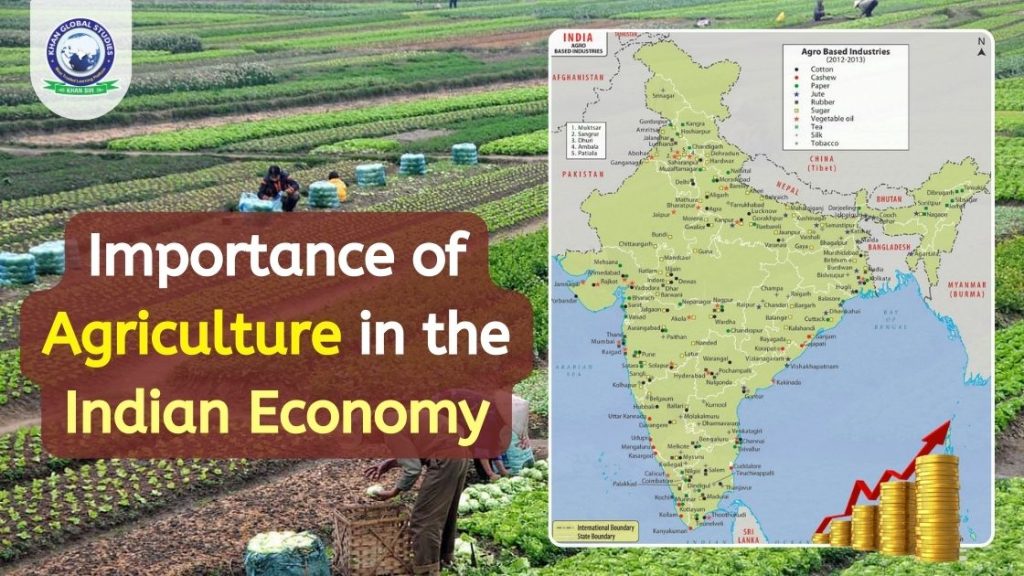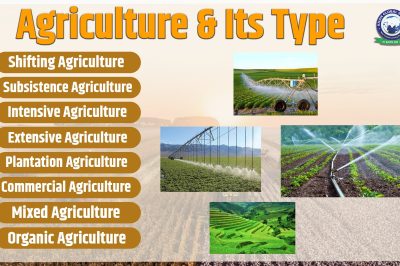The Indian economy is the sixth largest economy in the world. Most of the population of India depends on agriculture for their livelihood. The contribution of the agriculture sector to the total GDP of the country is about 14%. Although the agricultural sector plays a major role in the Indian economy, this sector has been in steady decline, while the service sector has been in relative growth.
Agriculture is part of the Indian Economy
The Indian economy is agricultural; The problem with such an agricultural economy is that the agricultural sector depends primarily on the cycle of production, distribution and consumption. Another problem in agricultural economics is productivity. Currently, Indian farmers produce 2.4 tonnes of rice per hectare of land, which is much less than their actual potential. In contrast, China and Brazil produce 4.7 and 3.6 tonnes of rice per hectare. Despite so many gaps in the agriculture sector, it is the largest segment of the Indian economy.
Significance of Agriculture in the Indian Economy
Almost half of India’s population was engaged in agriculture. The agriculture sector has an important place in the economy. Some times are:
- Agriculture provides employment opportunities to agricultural and non-agricultural workers.
- It plays an important role in trade and import-export activities.
Role of Agriculture in the Indian Economy
The role of the agriculture sector in the Indian economy is as follows:
1. Contribution to GDP
Since independence, the agriculture sector has been one of the main contributors to the country’s GDP. In the financial year 1950-51, the share of agriculture and other activities in the total GDP of the country was 59% in that financial year. Although the agriculture sector is continuously declining, it remains one of the most important sectors of the Indian economy. In contrast, in developed countries like Britain and the United States, the agricultural sector contributes only 3% to the total GDP.
2. Largest Employee in the Region
In India, the agriculture sector employs more than half of the country’s total population, making it the largest labour-intensive sector in the country. In comparison to the developed countries, about 54.6% of the total population of India is involved in the agriculture sector, whereas in the developed countries UK, USA, France and Australia only 2-6% of the total population is involved in the agriculture sector. Area.
3. Food Source
India is the second most famous country in the world. And there is still a need to feed such a large number of people. Therefore, agriculture and the economy should depend less on agricultural land.
4. Relationship between Agriculture and Industrial Sector
There is a constant need for raw materials for the continuous manufacturing of products and to meet this requirement, most of the industries in the country collect this raw material directly from the agricultural fields.
Nearly half of the income generated by the industrial sector in India comes from agricultural industries. Therefore the Indian industrial sector is highly dependent on the agricultural sector.
5. Commercial Importance
Indian agriculture is important both internally and externally for the industry and commercial purposes of the country. Agricultural products like tea, coffee, sugar, cashews, spices etc., and food and textile products like jute, cotton and others contribute 50% and 20% respectively to the total exports from the country. These represent about 70% of the country’s total exports and contribute to the country’s foreign trade.
6. Contribution to Public Revenue
Agriculture is the most important source of revenue for central and state governments. The government of the country earns sufficient revenue by increasing revenue from land. Furthermore, the movement of agricultural produce helps the Indian Railways to generate revenue, which in turn helps the government to generate revenue.
7. Economic System and Agriculture
It is believed that India’s prospects also depend largely on the agricultural sector. Good harvest always enhances the projected economic growth of the country and enhances the business environment of transportation system, industrial areas, internal trade etc.
A successful harvest also means the government will have enough money to cover its budgetary expenditure. Similarly, a bad harvest leads to a complete recession in the trade of the country, which ultimately leads to the collapse of the economic plan. Thus, in a country like India, the agriculture sector plays a vital role, and the prosperity of the Indian economy is still heavily dependent on it. As a result of the above study, it is clear that agricultural development is a necessary pre-condition for regional diversification and economic growth.
Conclusion
The Indian economy is an agro-economy and is highly dependent on the agricultural sector. Despite supporting the Indian economy, the agriculture sector also supports the industrial sector and international trade in imports and exports. Although the contribution of the agriculture sector to the Indian economy is decreasing, it is the sector that employs the largest number of people across the country.





